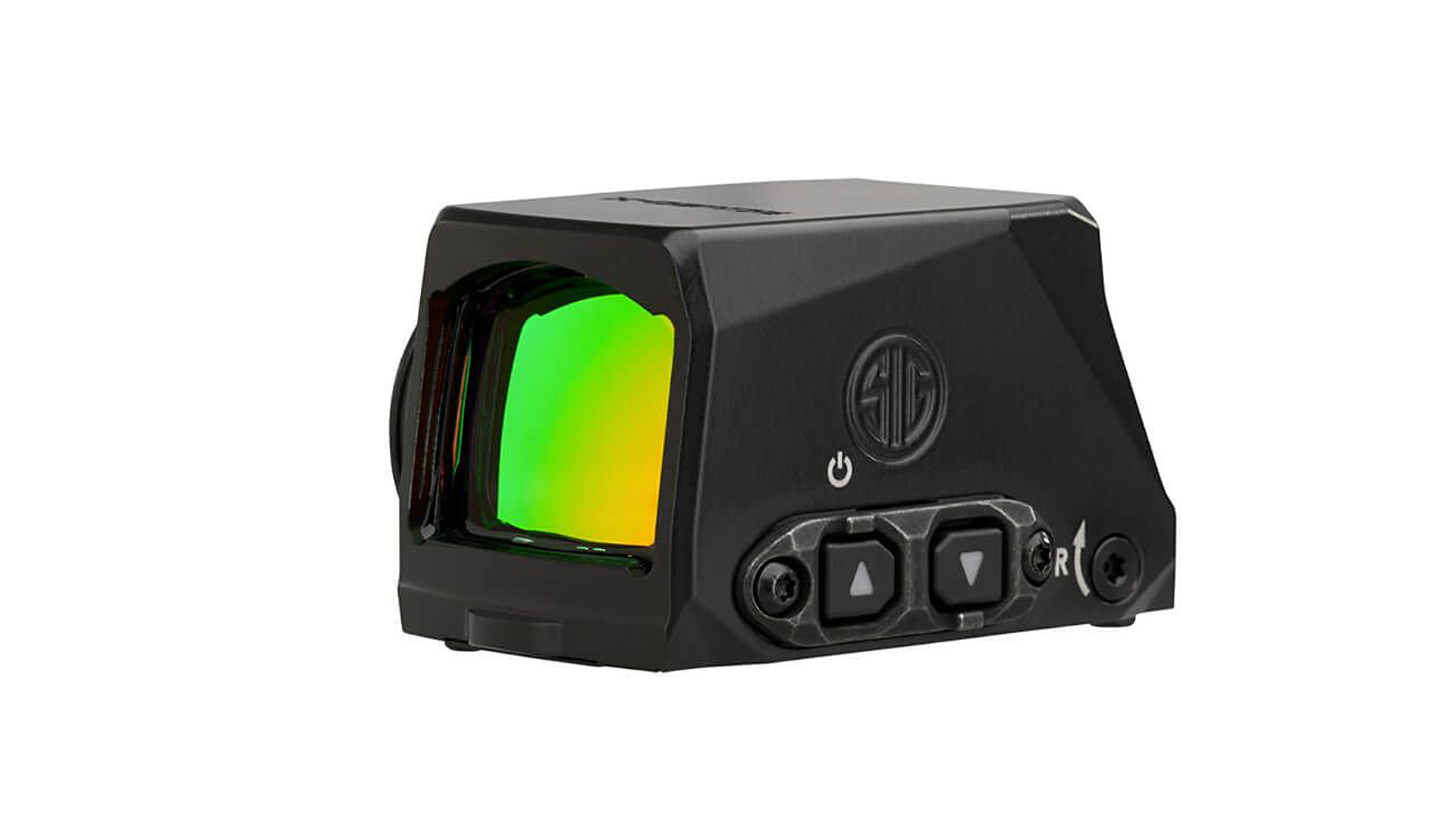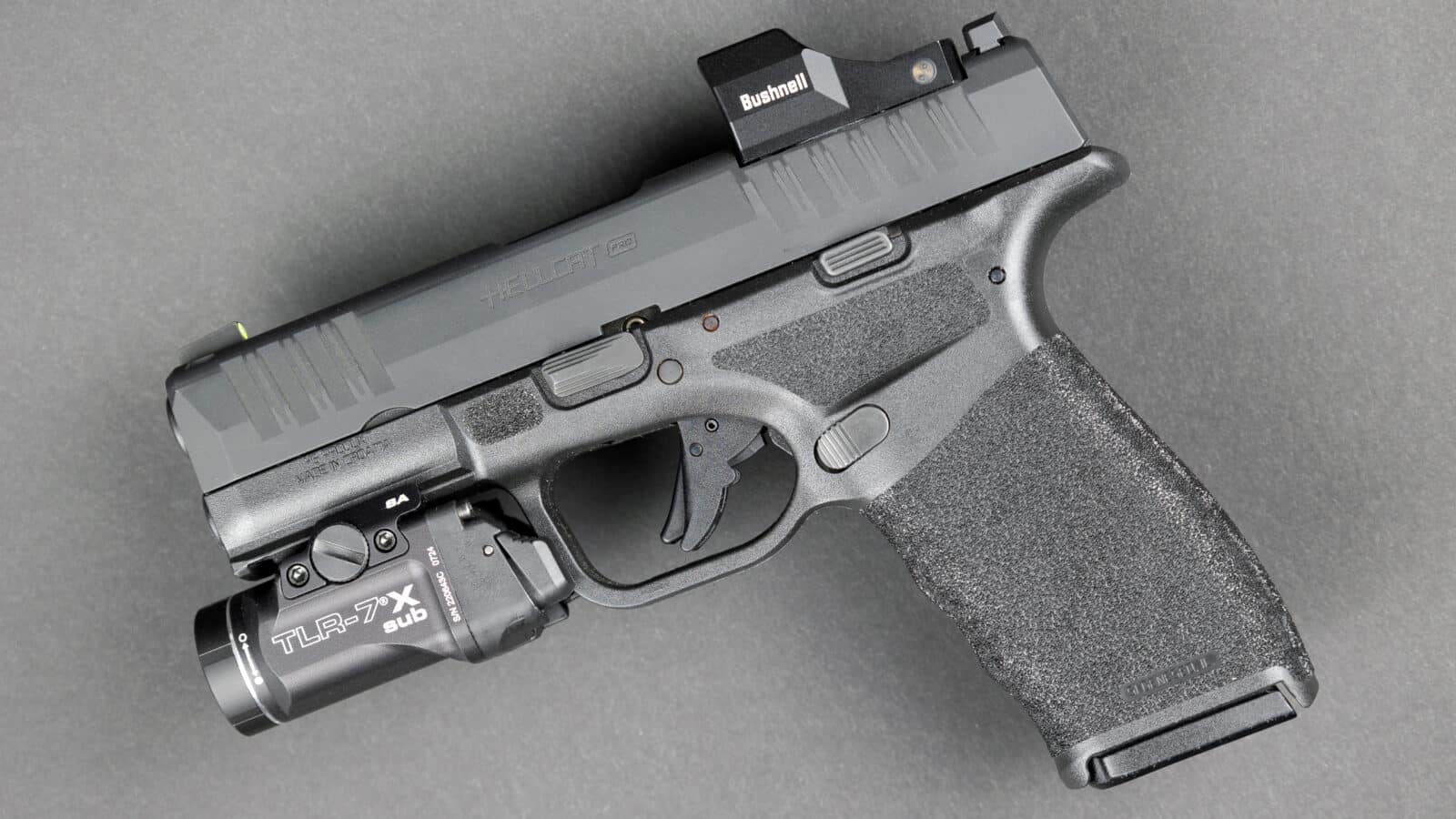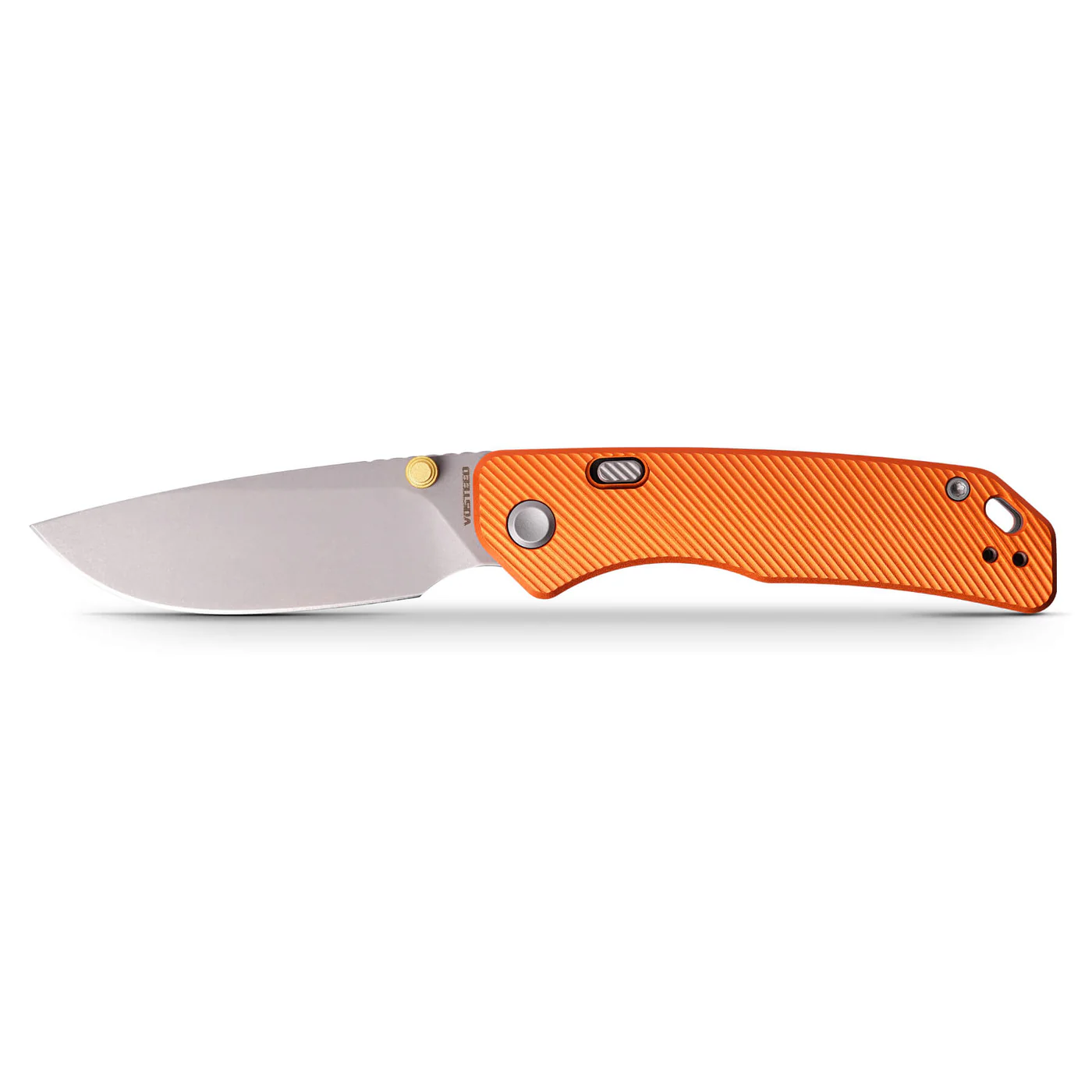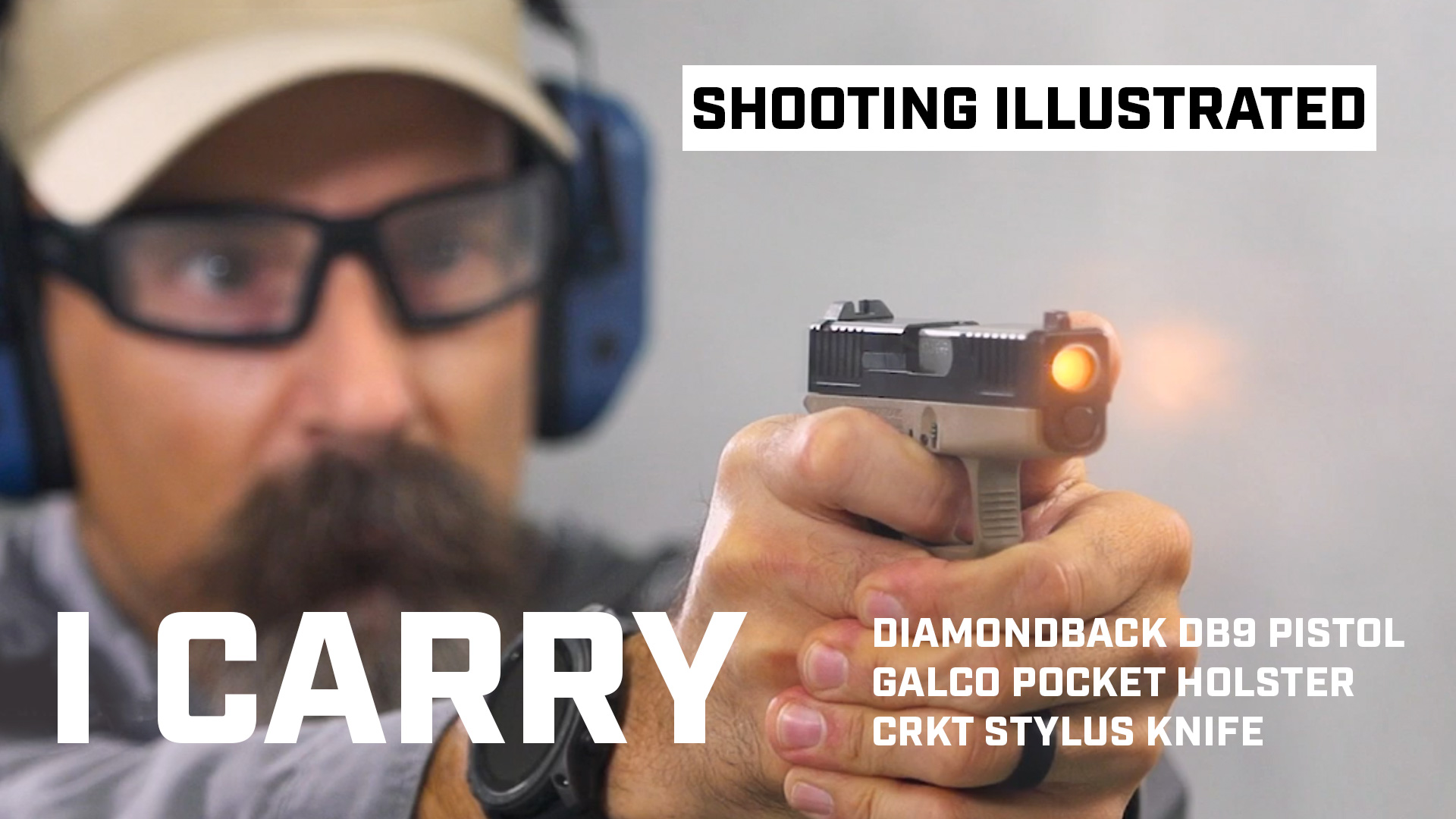Upgrades to Add That Extra Edge
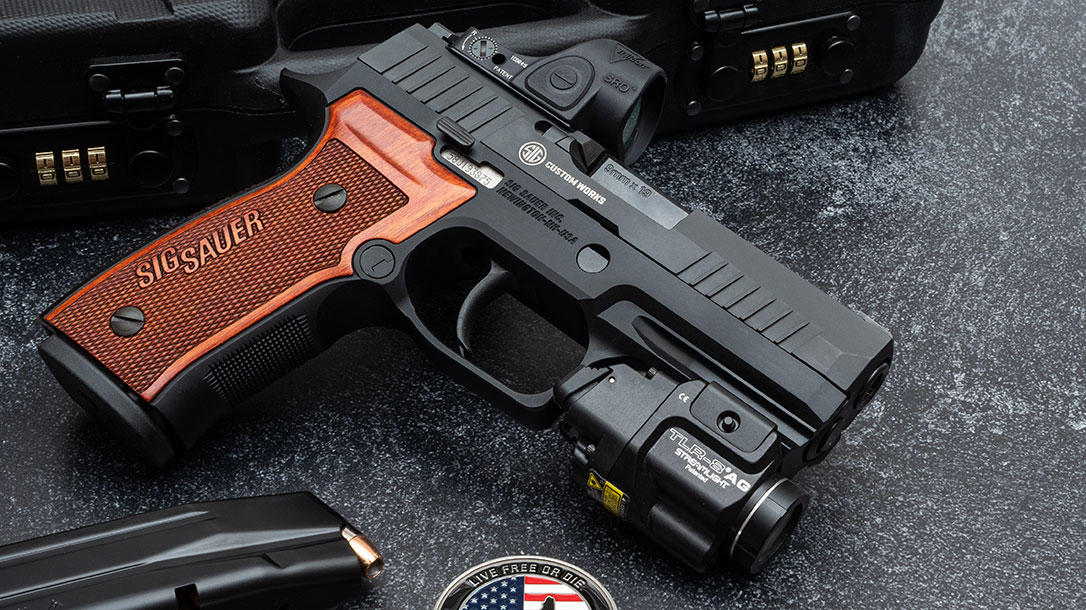
There’s an expression that goes something like, “You don’t know what you don’t know.” It applies to pretty much all areas of life, including being a new handgun owner. A vast majority of folks aren’t in the know about high-end builds and modifications. For them, handgun purchases consist of mainstream, mass-manufactured products and accessories that lack all the bells and whistles savvy gun owners have on their own handguns.
Picking the Right Handgun Accessories
There are all types of accessories and attachments that can be added to a handgun to improve its utility. Not to mention, enhancing the user’s effectiveness.
For this article, we’re going to stay away from swapping parts like barrels, slides, and other components that are necessary for the gun to actually function. That’s a whole other ball of wax.
Instead, we are focusing on add-on attachments or accessories that can give the user the edge when it matters most.
Upgraded Iron Sights
For me, the first thing I look at when I buy a pistol or revolver is the sight package. Very often, manufacturers will offer different types of sights for their handguns. This includes high-visibility sights, night sights, or a combination of both.
When I purchase a handgun, I try to buy the best sight package available from the manufacturer. I do this for a couple of reasons. Enhanced iron sights can allow you to get a faster sight picture on your target. Additionally, acquiring the best package available from the manufacturer helps you avoid the hassle and extra expense of replacing the sights on your own after the purchase.
This is particularly true if you plan to run a red-dot optic on your pistol. A lot of pistol/red-dot combinations require taller iron sights to reliably co-witness through the optic window. It’s just easier and cheaper to buy those sights already installed by the gun manufacturer.
So, you don’t always have to buy what’s sitting on the gun shop’s shelf. You can make inquiries with the retailer to see if any other versions are available with better sights. Then, simply place an order and wait a week or two for it to arrive.
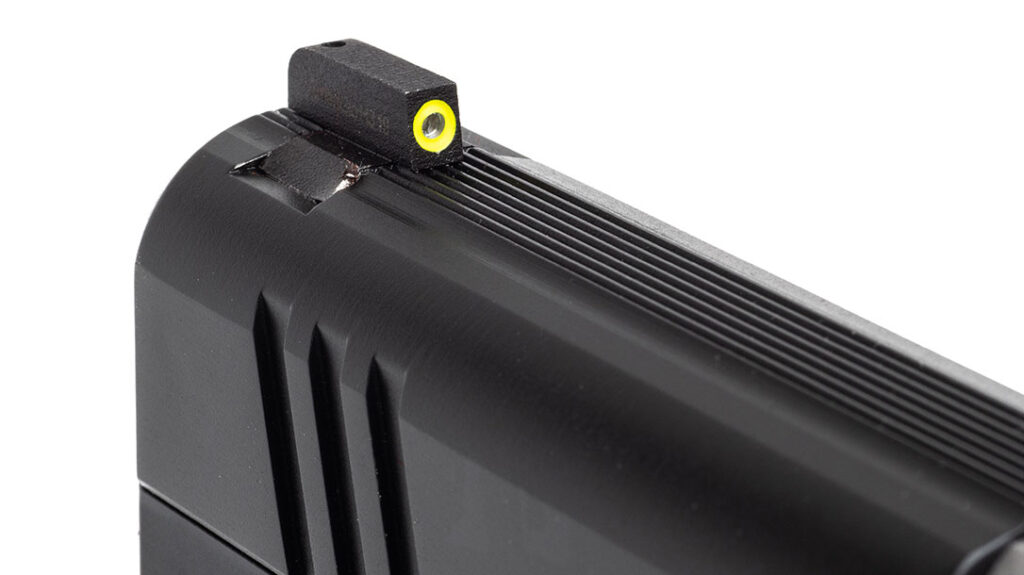
However, some gun companies don’t always offer top-shelf iron sights with their handguns—at least with certain models. In that case, there are dozens of companies that offer aftermarket iron sights for handguns. You can then have them installed by a local gunsmith for a small fee.
Some of my favorite aftermarket sight companies are Ameriglo, Trijicon, XS Sights, and Meprolight. But there are plenty of quality companies to choose from.
Red-Dot Optics
Aside from scopes on hunting handguns that have been around for quite a while, optics on everyday handguns are a relatively new phenomenon. Red-dot optics have been popular with competition guns. However, in the past decade, they have been gaining a lot of traction with defensive handguns.
The main advantage of a red-dot optic is that it allows the shooter to have just one plane of focus with a simple overlay of the dot on the target. With iron sights, the shooter has to align the sights properly and focus on the front sight. All while simultaneously keeping the target in the picture. These different focal planes often create issues for people shooting accurately and quickly.
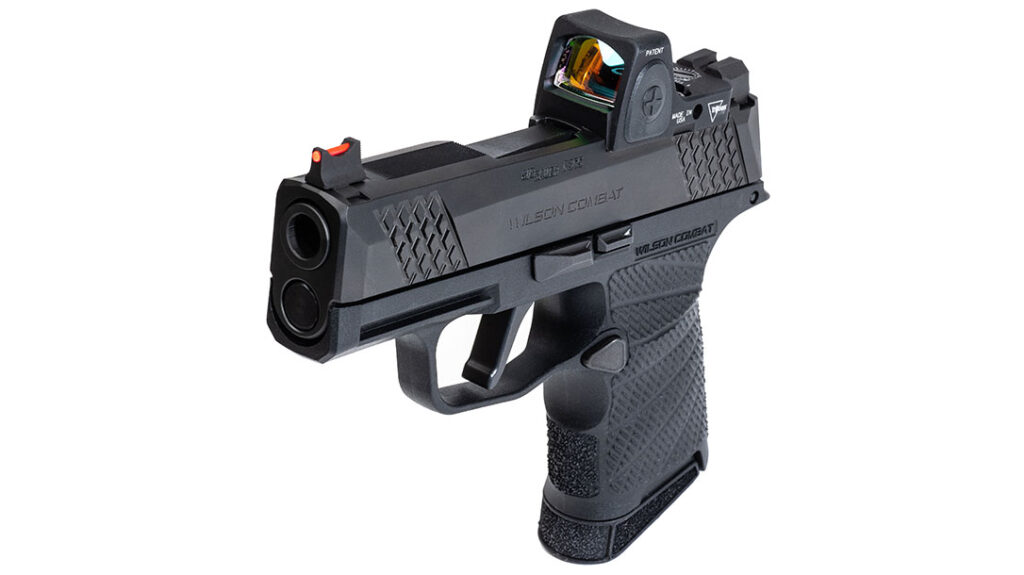
There’s still some healthy debate over the actual utility of red-dot sights, especially with regard to fast, close-up encounters. However, there’s no denying the fact that a quality red-dot optic can help improve shooting accuracy—particularly at distance.
If you are interested in attaching one to your defensive handgun, do your research before you even buy the gun. Not all red-dot mounting solutions are created equal when it comes to the various gun manufacturers.
Some manufacturers offer a robust and thorough mounting solution. However, others treat the topic as an afterthought or confuse the issue with bad documentation.
Optics Mounting Solutions
I think FN offers one of the most well thought out and comprehensive optics-mounting solutions with each of its pistols. FN includes an organized kit, complete with plates and screws to mate up with popular optics on the market. And all of it is neatly organized.
Another manufacturer making waves is Springfield Armory, particularly with its new Echelon pistol. It allows you to mount a variety of popular red-dot optics directly to the slide without the need for an adapter plate. This is an industry first for a duty/defensive pistol.
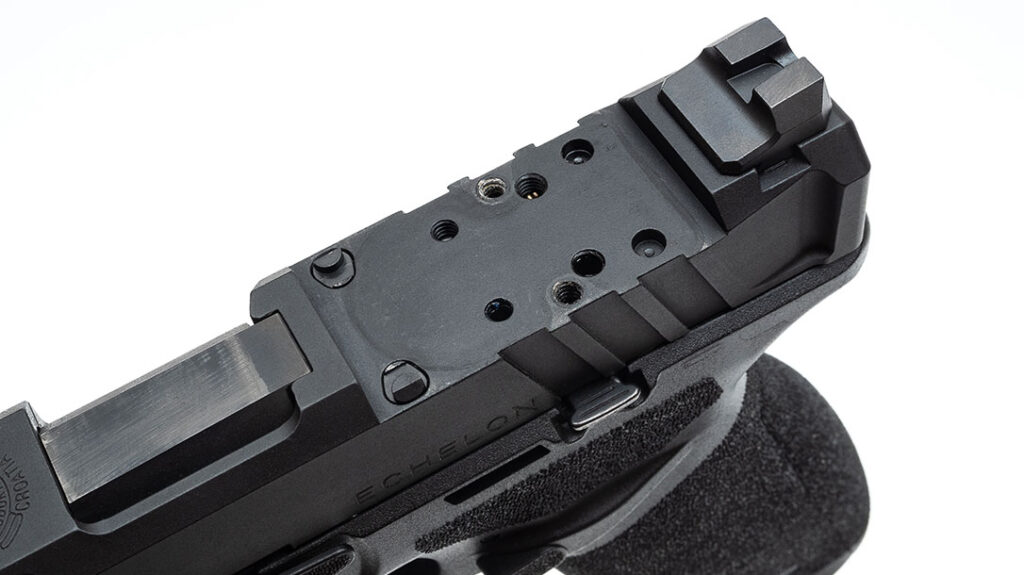
Even for manufacturers that don’t offer the best optics solutions, there are plenty of aftermarket companies that can help you with what you need. For example, there are plenty of gunsmiths that can mill and tap your slide to mount whatever optic you like.
Companies like C&H Precision also make their own optic adapter plates. These plates are available for a variety of makes/models and are significantly better than what the gun manufacturer offers.
Revolvers aren’t exactly the ideal platform for mounting a red dot. However, there are companies offering fantastic solutions for those as well, including Allchin Gun Parts.
Choosing an Optic
As for the optics themselves, there are a slew of companies out there making red-dot sights for handguns. Just like everything else, there are good and bad offerings on the market. Some are better built, have longer battery life, or have a better optics formula that provides a clear, parallax-free picture.
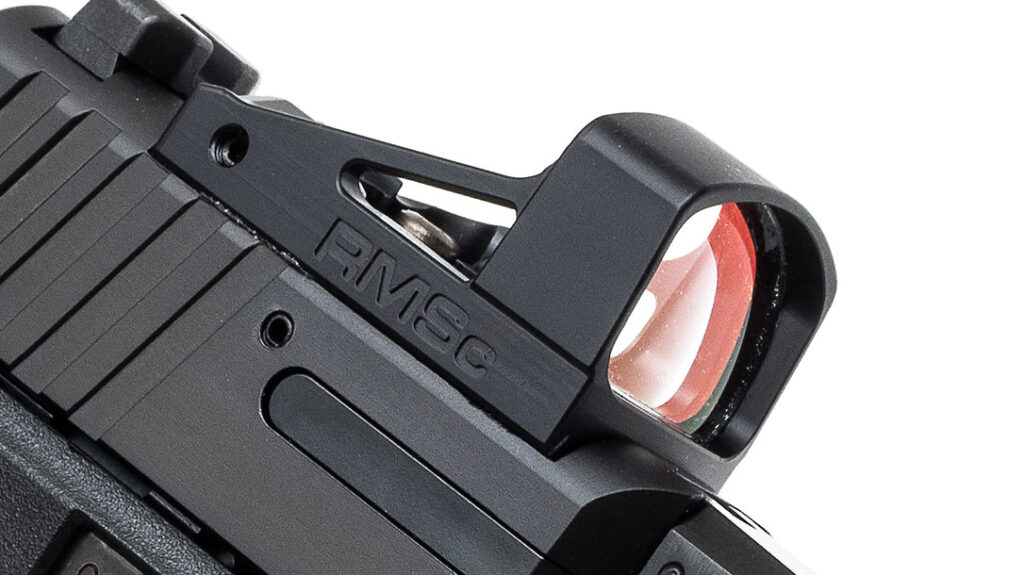
If it were purely for recreational shooting at the range or around the house, I’d say it doesn’t really matter too much which optic you choose. But for a defensive pistol that you rely on with your life, I’m always going to go with quality optics. Even if they cost more.
Some quality red-dot companies to look at for handguns include Trijicon, Steiner, Leupold, Aimpoint, and Holosun.
Lasers and Lights
Nowadays, it’s common for a defensive pistol to come with either a Picatinny rail or an accessory rail to mount a laser or light—or both. Gone are the days of overly large lights and laser units that look like they are powered by a 12-volt golf cart battery. Companies offer small, sleek, and efficient units that are robust and offer long battery life as well.
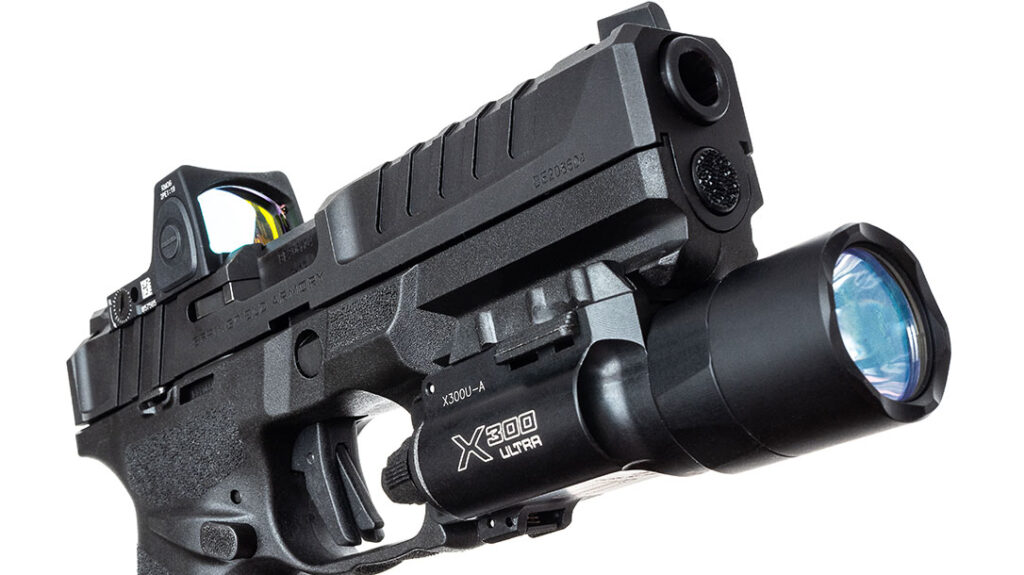
There’s still a healthy debate about mounting a light or laser to your defensive handgun. Some seasoned pros in the industry believe civilians don’t really need a light on a handgun—especially a concealed-carry gun.
They believe that chances are low that a civilian will be in a situation where a light is necessary. Not to mention, lights add additional unnecessary bulk to the package you are trying to conceal. Others operate under the “Better to have it and not need it…” umbrella. Correspondingly, they insist on having a weapon light on their carry pistol.
Personally, I think it’s situation dependent. I will usually lean toward having a light (at minimum) on my carry pistols. There could be an instance where being able to identify a threat would be invaluable. In addition, a powerful enough light could also blind or disorient an assailant.
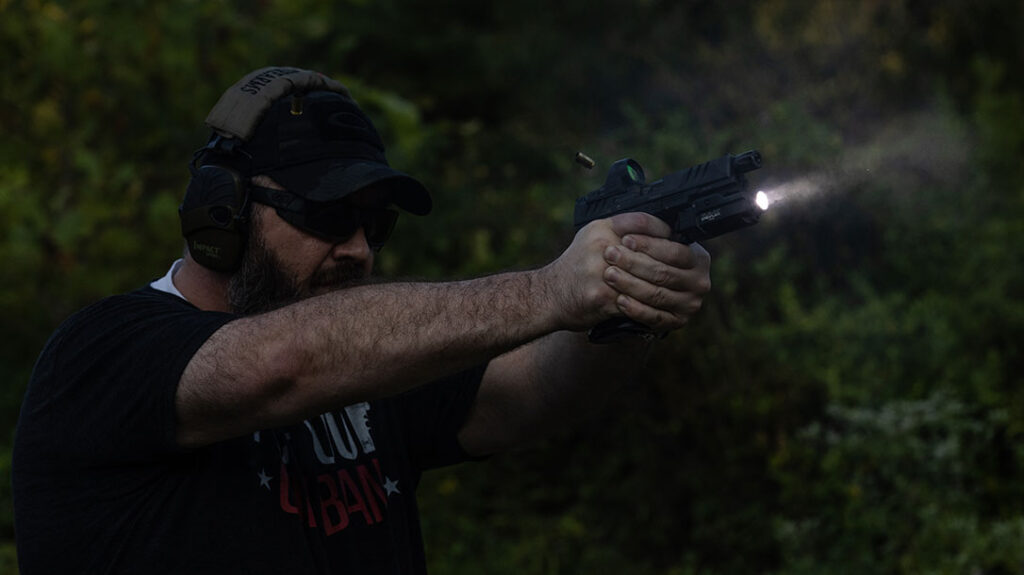
It comes down to what type of clothing I am wearing and how easy it is to conceal the pistol. During summer months, when the clothing is lighter and offers less coverage, it’s harder to conceal a pistol with a weapon light and/or laser unit attached.
To Laser or Not to Laser?
There’s a similar debate about the effectiveness and utility of having a laser unit attached to a carry pistol. Lasers can provide a valuable aid to shooters in low light. Especially with smaller pistols that have rudimentary sights that aren’t easily visible in some conditions. Likewise, for pistols that aren’t large enough to mount a red dot.
That said, a laser unit does not replace the need to train diligently with the pistol’s iron sights under stress. Also, I personally do not carry a laser on a pistol on which a red-dot optic is mounted. For me, having a dot in the optic and the laser dot on the target is distracting and muddies up the sight picture. Your mileage may vary, but it’s something to think about.
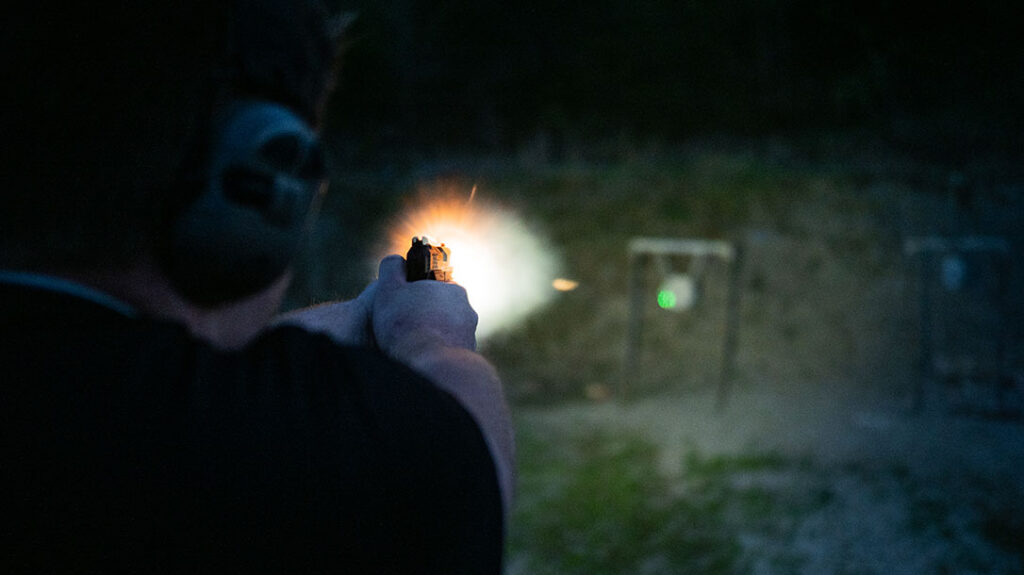
Aside from the additional bulk of adding a laser or light to your carry pistol, there are a couple of things to think about before making the purchase.
First, there are many possible combinations of lights, lasers, and handguns on the market. That makes finding a holster to fit your particular handgun with the specific light or laser you choose more difficult. This is especially true with obscure models of lights and lasers.
Some holster manufacturers will offer holsters for pistols with standard light/laser models. These include companies like Surefire, Streamlight, and Inforce. However, it’s possible you may have to get a custom Kydex holster made to fit your particular combination.
A few of my favorite Kydex holster companies include T. Rex Arms, Bare Arms, ANR Design, Gunfighters Inc., and Tier 1 Holsters.
Changing the Battery
Before buying a light or laser, research the type of battery it takes and how it’s mounted to the pistol. I’ve seen some laser units that have to be unmounted and pulled apart to insert a fresh battery. This is not only a hassle, but it could upset the zero you have on the dot. This would require another trip to the range to get the zero back on point again.
It might be worth your time to find a laser unit that takes readily available batteries. Likewise, one that allows those batteries to be inserted without removing the unit from the pistol’s rail. The same consideration applies to red-dot optics as well.
Just Compensation
Like red-dot units, compensators for pistols have enjoyed a long career in competitive shooting. Similarly, compensators have also found a home with pistols and revolvers for defensive work and even hunting applications.
In some ways, compensators are just like high fashion—trends come and go over the decades. Over the past couple of years, there’s been an uptick in aftermarket compensators for pistols. Likewise, gun manufacturers have also offered direct options.
For the uninitiated, compensators act like nozzles on a rocket. They re-direct gases from the muzzle in a direction that helps offset muzzle flip that occurs during recoil.
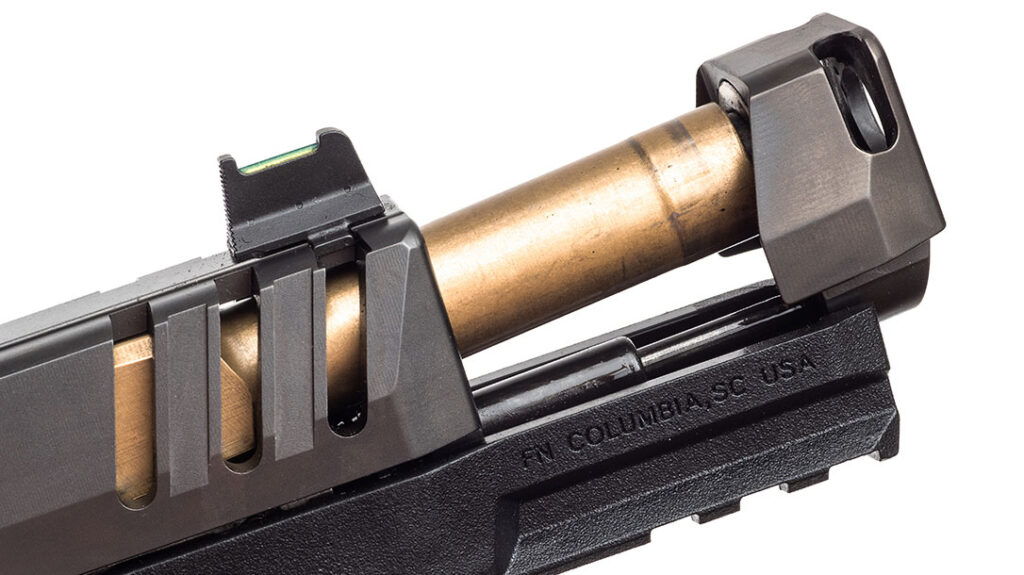
There is a wide variety of styles and designs, including models that attach directly to the barrel and others that attach some other way—such as a pistol’s Picatinny rail—and sit directly in front of the slide and barrel. One example is the Vantage Point Armory compensator designed for Beretta’s PX4.
In other examples, the compensator is part of the barrel itself, where the ports are cut directly into the barrel. This is particularly the case with revolvers, though some pistols also include this type of treatment.
More recently, Sig Sauer has offered a few pistols (P365 Macro Comp and P320 AXG Legion) that have sort of a “semi-comp” package. In these examples, the slide is longer than the barrel and includes ports to re-direct the gases exiting the muzzle.
It’s not as effective as a true compensator package. However, this approach gives users some benefit while keeping the overall size of the pistol down.
One segment that has seen many pistols with a compensator directly from the manufacturer is the sub-compact/micro-compact categories. These pistols are smaller in size and tend to have more recoil. Prime examples are the Hellcat RDP and the FN 509 CC Edge.
Compensator Considerations
Like anything else with handgun modifications, your mileage may vary when adding a compensator or getting a pistol with a compensator already installed. Some designs are better than others. Likewise, some shooters may or may not notice a significant difference in muzzle flip with a compensator in place.
The trick is to try a few different types and see if there is one style that adds value and enhances your performance.

The downside is that some compensators add extra length to the pistol, making it more difficult to conceal. Also, some folks argue that compensators that vent hot (and bright) gases up in the shooter’s line of sight can temporarily impact their night vision. While possible, I think the possibility of that—and its impact—is a little overblown.
However, it is important to remember that gases and powder are being vented upward or to the sides. So, it will be more challenging to shoot from a retention position with the gun close to the body or in a confined space such as a car. Explosive gases and hot powder residue are not friendly to clothing or human skin.
That’s a Wrap
There’s quite a lot that can be done to modify your handgun and augment your performance as a shooter. Especially in situations where defensive use applies.
As it stands, we’ve only scratched the surface of the things that can be altered on your handgun. Replacement grips can be had, polymer frames can be stippled, and replacement grip modules can be found for striker-fired guns with chassis systems.
Then there are replacement barrels, enhanced magazine releases, high-capacity magazines, and the list goes on.
As a beginning shooter, a key consideration is to keep modifications clean and simple. Likewise, don’t let them get in the way of your shooting fundamentals. Too much clutter can impact performance just as with anything else in life.
The most important thing is to train in all environments and lighting conditions with the modifications you’ve made. Make sure the mods don’t interfere with your carry or the draw. Learn to activate the weapon light quickly, and if you’re rocking an optic or laser, develop the correct muscle memory to immediately find the dot on the draw.
Like the man’s answer to the stranger’s question about how to get to Carnegie Hall, “Practice, practice, practice.”
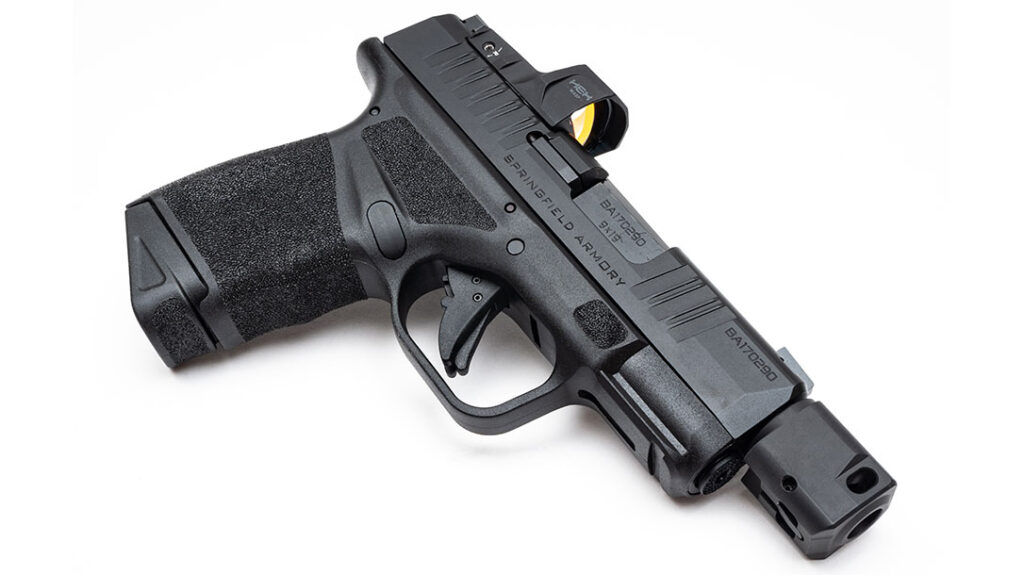
Didn’t find what you were looking for?



